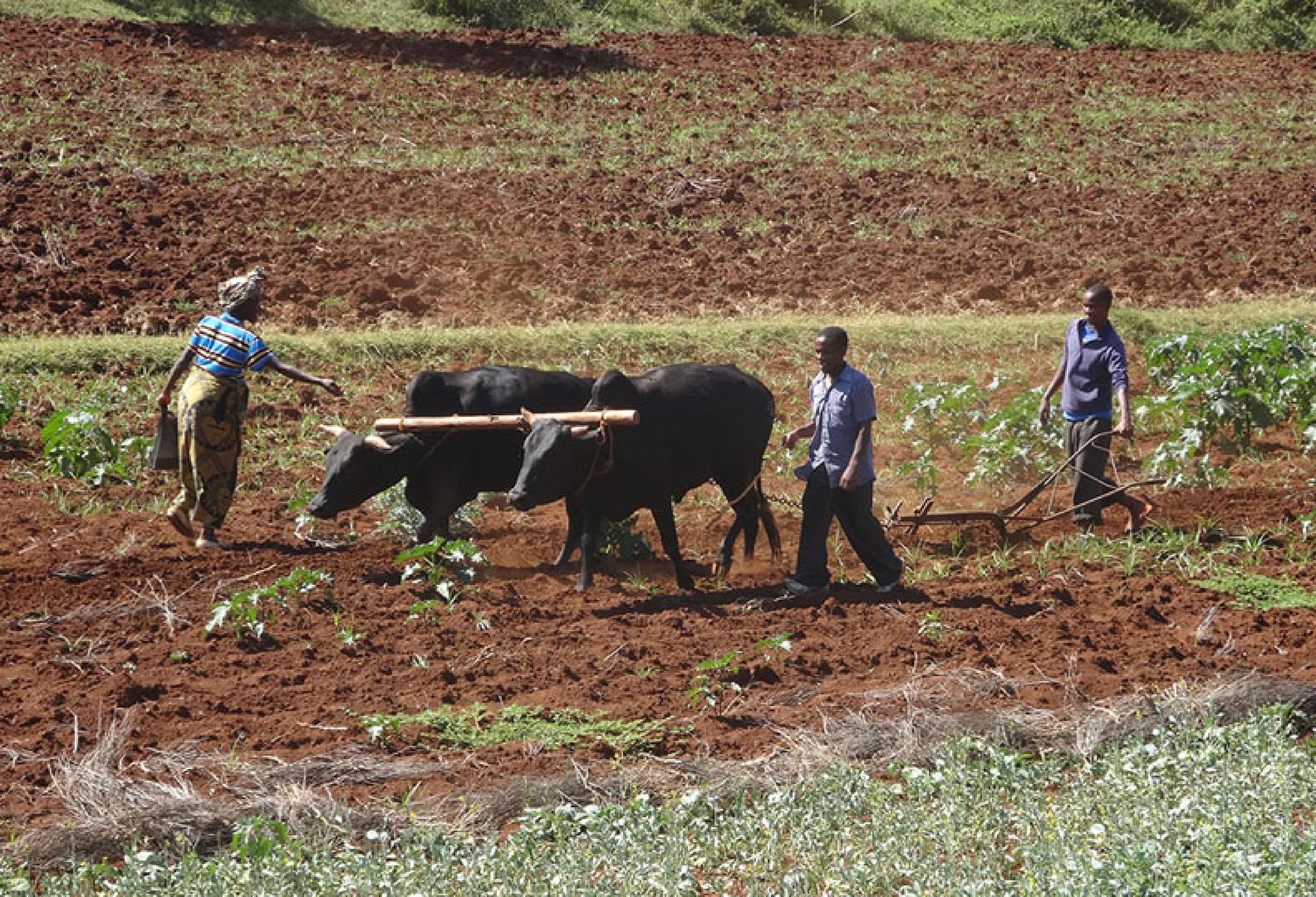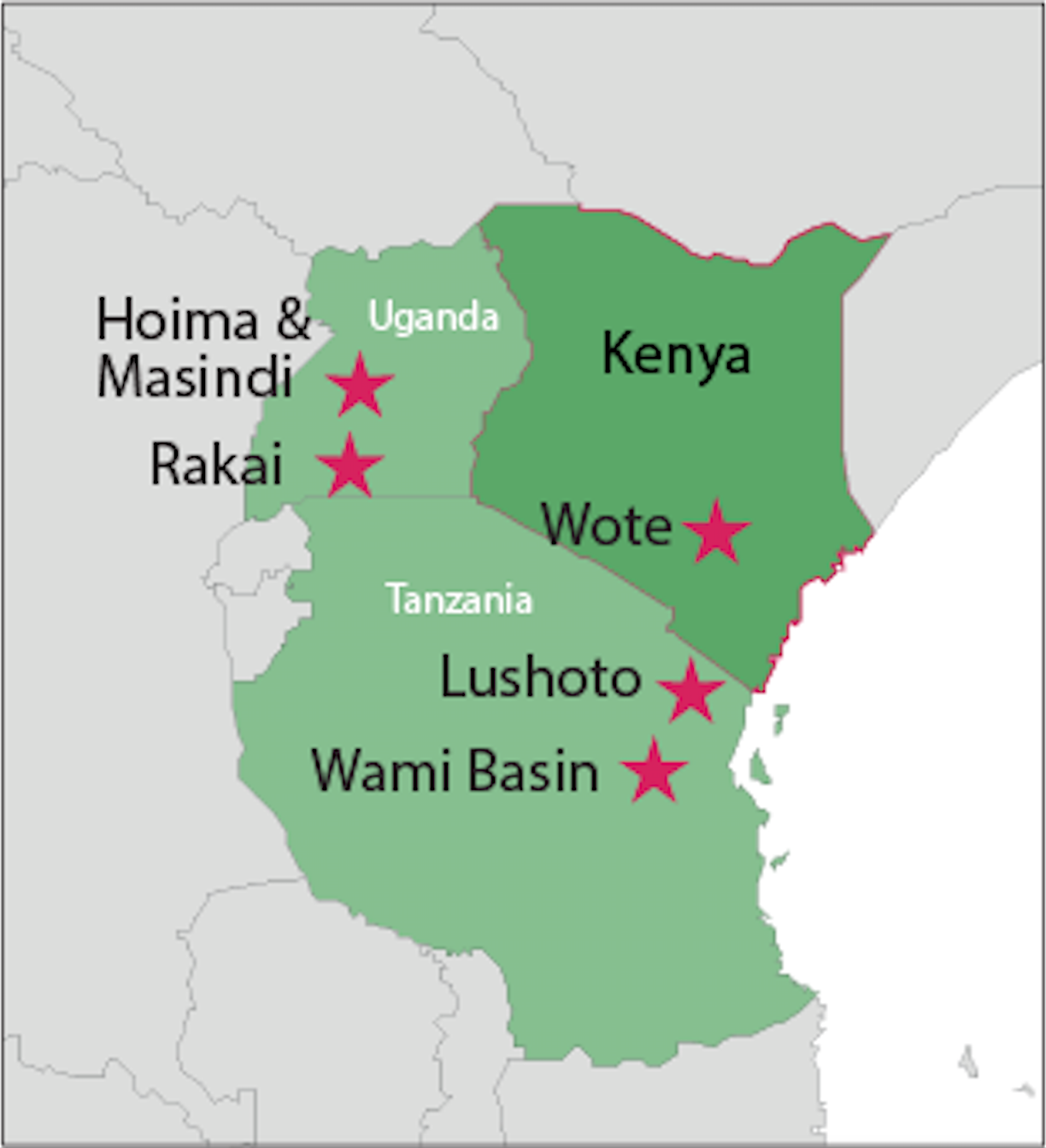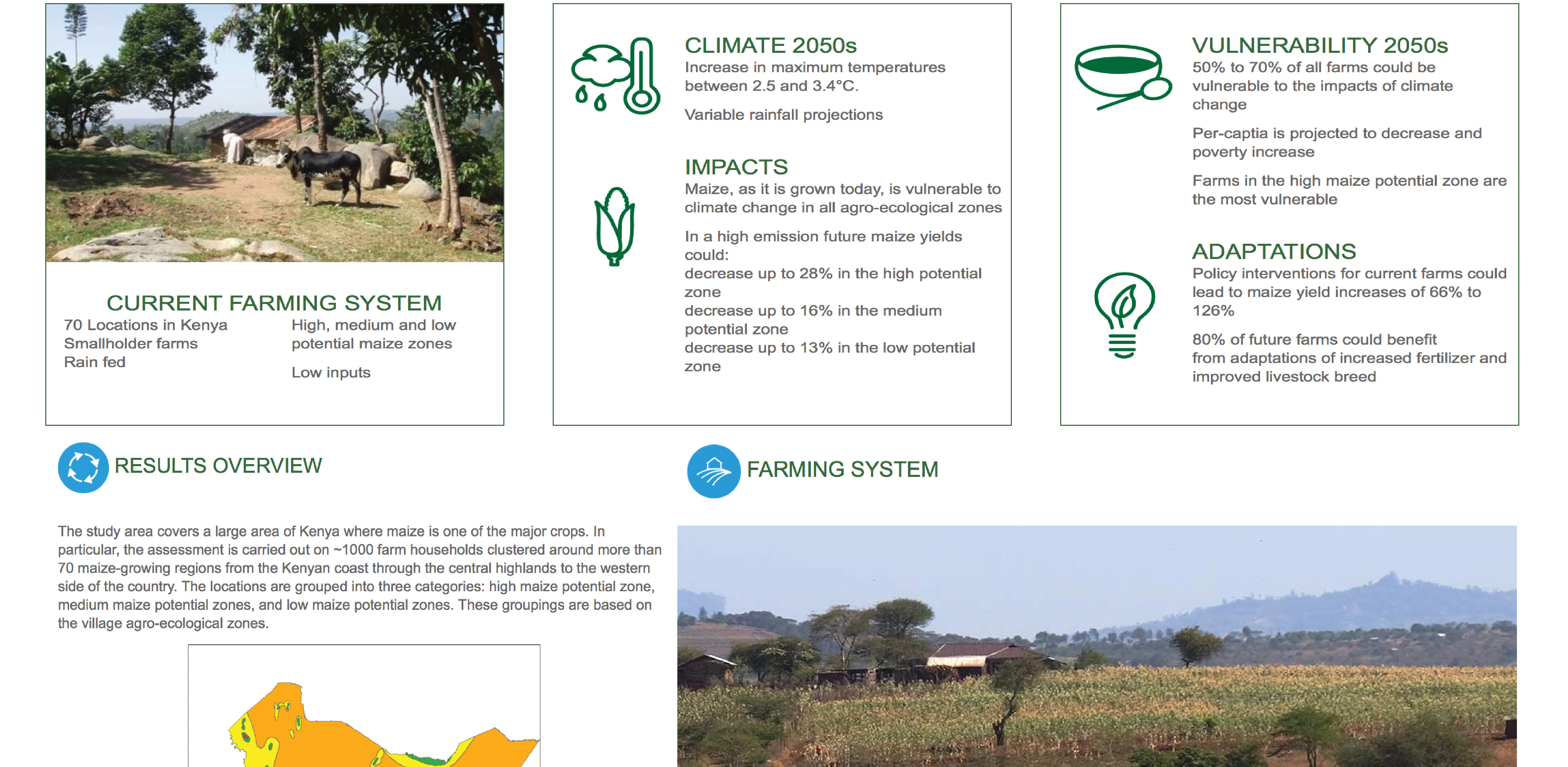East Africa
Overview of Initiative
The East Africa research region targets study areas within Tanzania, Uganda, and Kenya. East Africa is susceptible to climate change implications that include: the warming of sea surface temperatures and subsequent droughts; changes in precipitation frequency and amount; more extreme events; and increased food insecurity. Focusing attention on region specific adaptation and mitigation methods is vital for projecting future climate impacts.
The overall goal of Phase 2 (2015-2017) was to assist East African countries in managing climate change and variability related vulnerabilities through the integration of science based knowledge. This knowledge will be used to assist in national and local climate change adaptation strategies and action plans. East Africa built on Phase 1 research by developing full Regional Integrated Assessments (RIAs) based on sound scientific knowledge, integrating new knowledge into national and sub-national adaptation plans, and building capacity and robustness of analytical frameworks and tools. These assessments were co-developed through scientific sources and stakeholder engagement for the purpose of finding and presenting relevant findings to decision makers. This integration helped promote the usefulness of AgMIP’s tools and protocols for other applications, including food security, seasonal forecasting, and early warning systems.
Team members from Kenya, Tanzania, Uganda and Ethiopia comprise the East Africa Team. The project assessed impacts of climate variability and change on smallholder agricultural systems using calibrated climate, crop, livestock, and economic models. These impacts are assessed through comprehensive RIAs of climate change impacts on both the local and national scale with socio-economic scenario analysis. The East Africa team further advanced regional assessments for Uganda and Ethiopia (from Phase 1), while also upscaled its approach to a national level for Kenya and Tanzania.
Collaboration with stakeholders was made possible through the existing CCASA East-Africa network. Key stakeholders were engaged regularly throughout the project. Through CCASA East-Africa network engagement, the project expanded, and will continue to expand, stakeholder uptake and utilization of project outputs.


Impacts Explorer – Kenya
Small maize farms in varied agro-ecological zones


East Africa Team members
Lieven Claessens: Lead PI
Siza Tumbo: Co-PI
Gummadi Sridhar: Co-PI
Anthony Esilaba: Kenya coordinator
Moses Tenywa: Uganda coordinator
Caleb Dickson: Economic modeling; ARP
Fikadu Getachew: Crop modeling
Jemal Seid: Climate modeling
Adam Bekele: Economic modeling
Mary Kilavi: Climate modeling
Joseph Miriti: Crop modeling
Anthony Oyoo: Economic modeling; stakeholder interaction
Khamaldin: Mutabazi Economic modeling; TOA-MD
Ibrahim Kadigi: Economic modeling; TOA-MD
Barnabas M. Msongaleli: Crop modeling
Peter Mlonganile: Climate
David D. Maleko: Livestock
Majaliwa Mwanjalolo: Crop modeling
Patrick Musinguzi: Crop modeling
Josephine Nampiija: Crop Modeling
Carol Nandozi: Climate
Jackline Bonabana-Wabbi: Economics modeling; TOA
Kelvin Shikuku: RIA, TOA, economics
Caroline Mwongera: RIA, TOA, bio-physical
John Recha: Stakeholder liaison
Maren Radeny: Stakeholder liaison
Research Summary:
KENYA, NATIONAL
Crops: Maize
Models: DSSAT, APSIM, LivSim
Farm System: Maize based
Economic Strata: High potential-low potential, AEZ
Possible Adaptation: Improved maize and bean varieties; alternative crops (e.g. sorghum, legumes, etc)
WOTE, EASTERN KENYA
Crops: Maize, cowpea/beans, sorghum, pigeon pea
Models: DSSAT, APSIM, LivSim
Farm System: Mixed crop-livestock system using crop residue as livestock feed
Economic Strata: Farms with livestock integration, Farms without livestock integration
Possible Adaptation: Climate smart agriculture practices including: high grain and residue yielding sorghum for improved feeding, tightening of Nitrogen cycle, dryland crop and cultivar choices
RAKAI, KAGERA BASIN, UGANDA
Crops: Maize
Models: DSSAT and APSIM
Farm System: Maize, beans, banana
Economic Strata: To Be Determined
Possible Adaptation: CSA adaptation package
LUSHUTO, WEST USAMBARA, TANZANIA
Crops: Maize
Models: DSSAT, APSIM, LivSim
Farm System: Maize, bean, horticulture, livestock
Economic Strata: Livestock
Possible Adaptation: CSA adaptation packages
WAMI BASIN, TANZANIA
Crops: Maize
Models: DSSAT, APSIM, LivSim
Farm System: Maize, rice, sesame, sorghum, millets, legumes
Economic Strata: 2 livelihood zones
Possible Adaptation: Fertilization and plant population changes
ALBERTEN RIFT (HOIMA & MASINDI, UGANDA
Crops: Maize
Models: DSSAT and APSIM
Farm System: Maize-beans-groundnuts-cassava-banana
Economic Strata: 3 soil types
Possible Adaptation: Agronomic practices; short and long maturing varieties; stakeholder workshop planned to elicit near-term adaptation options
KEY PARTICIPATING INSTITUTIONS
The International Crops Research Institute for Semi-Arid Tropics (ICRISAT) – Kenya
The Ethiopian Institute of Agricultural Research
The Kenya Meteorological Society
Kenya Agriculture and Livestock Research Organization
Sokoine University of Agriculture, Tanzania
Makerere University, Uganda
International Center for Tropical Agriculture (CIAT)
Climate Change, Agriculture, and Food Security (CCAFS) Research Program – Kenya
